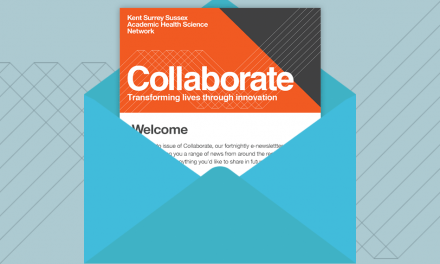Natasha Swinscoe, AHSN Network’s national lead for patient safety
On the first ever World Patient Safety Day, Natasha Swinscoe, the AHSN Network’s national lead for patient safety and Chief Executive of the West of England AHSN, writes about the launch of the AHSN Network’s Patient Safety Plan to support the NHS patient safety strategy and how greater collaboration is needed to make it a success.
The announcement earlier this year of a new World Patient Safety Day to take place on 17 September each year was a significant statement by the World Health Organisation (WHO) of the importance of this global issue. They estimate that 134 million adverse events happen worldwide each year in hospitals, contributing to 2.6 million deaths. In just the OECD member countries (Organisation for Economic Cooperation and Development), 15% of hospital expenses are thought to be due to patient safety failures.
It’s work that we’re familiar with in the fifteen AHSNs across England, and the Patient Safety Collaboratives (PSCs) they host, which support delivery of the National Patient Safety Improvement Programme.
Even before the PSCs were launched, the AHSN Network had identified the safety of service delivery as a key priority in many of their early workstreams. This resulted in a number of evidence-based improvement initiatives, which have since been adopted as PSC programmes for national roll-out as well as providing foundations for new PSC work.
Patient safety is the absence of preventable harm to a patient and a reduction of the risk of unnecessary harm associated with healthcare. WHO says clear policies, organisational leadership, culture, capacity, data to drive safety improvements, skilled healthcare professionals and effective involvement of patients in their care are the ingredients that help ensure sustainable and significant improvements in safety.
In June the NHS published a new Patient Safety Strategy, describing how the NHS will continuously improve patient safety, building on the foundations of a safer culture and safer systems. The opportunity is huge, and the strategy aims to save almost 1,000 extra lives and £100 million in care costs each year from 2023/24.
The strategy also acknowledges the work of the PSCs: “Building on the work of the last five years, the revised national patient safety improvement programme, supported by the Patient Safety Collaboratives (PSCs) across England that are commissioned through and hosted by the 15 Academic Health Science Networks (AHSNs), will be a key improvement and delivery arm of the NHS Patient Safety Strategy.”
In response, we’ve published our own AHSN Network Patient Safety Plan, which demonstrates our commitment to working in partnership with our local healthcare systems to deliver on this promise.
We highlight some of our successes including PReCePT, medication to help reduce the risk of preterm babies developing cerebral palsy, and the roll-out of the National Early Warning Score (NEWS) to spot when a patient’s condition is deteriorating. Thanks to our work, NEWS has now been taken up by all ambulance trusts in England and spread to 96% of acute trusts.
We’re expanding our horizons to focus on safety in non-acute settings too, looking at how NEWS can be adapted for use in the community. Our care homes report, also just published, contains many case studies of how we’re working with homes on medicines safety, dementia, monitoring and screening, and workforce development. One example is LPZ, a benchmarking tool to help manage common health problems in care homes. We estimate scaling up the tool to 500 care homes could save £4.5 million over three years from pressure sore reduction alone; collectively, these projects have the potential to save many lives and tens of millions of pounds.
Most importantly, we recognise our role as system orchestrators, connecting parts of the system that would otherwise not connect.
Our track record of delivering programmes that make a real difference has earned the respect and engagement of our local stakeholders, and is central to our success. We want to bring together patients and carers, our local partners, regional NHS teams and national bodies like the Health Foundation and Health Education England to ramp up our collective work on patient safety.
Patient safety is a central priority and guiding principle for all AHSNs. It is the lens through which we look and is embedded in all we do; striving to improve the safety of services for all users of the health and care system.
You can download ‘Patient safety in partnership: Our plan for a safer future 2019-2025’ at www.ahsnnetwork.com/patient-safety-plan.





